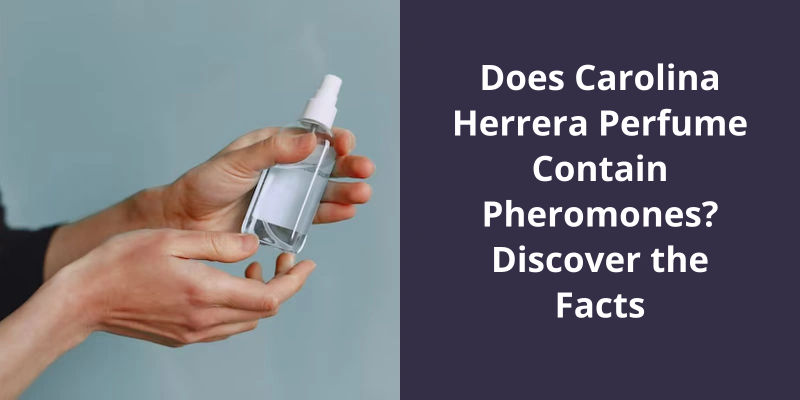Unusual fruit perfume refers to those fragrances that highlight unique fruity notes, offering a different sensory experience from traditional floral or musky scents. A few examples of such fruits can be dragon fruit, passionfruit, or lychee. Perfumes with unusual fruit notes are typically vibrant, juicy, and fresh, making them perfect for individuals who desire a refreshing yet non-conventional scent. They often blend these exotic fruity notes with other essences such as vanilla, musk, or floral notes to create a balanced, complex scent that surprise, intrigue, and delight wearers and those around them. With unusual fruit perfume, one can expect a unique and enticing fragrance experience that truly stands out.

Can You Make Perfume Out of Fruits?
Can you make perfume out of fruits? Absolutely! Thanks to a multitude of synthetic materials, perfumers can incorporate a wide variety of fruits into their fragrances, creating unique and enticing scents. While traditional fruits like melon, pear, and red and yellow fruits such as peach or apricot are commonly used in perfumery, their exotic cousins like lychee, mango, and papaya are also perfectly integrated into sunny fragrances.
They can use the essence or extracts of fruits to capture their distinct aromas, and then combine them with other ingredients to create a well-balanced and captivating fragrance. This process allows for the creation of fragrances that aren’t only sweet and fruity but also have depth and complexity.
One of the advantages of using fruits in perfumery is their ability to add freshness and vibrancy to a fragrance. Fruity notes can brighten up a composition and give it a youthful and playful character. They can also evoke memories and emotions, as many fruits have nostalgic and familiar scents that are instantly recognizable.
So, next time youre looking for a unique and refreshing fragrance, consider trying an unusual fruit perfume. With their vibrant and sweet aromas, these fragrances will transport you to a sunny and exotic destination, all while leaving a delightful and tantalizing trail wherever you go.
The Process of Making Perfume Out of Fruits
The process of making perfume out of fruits involves several steps. First, the fruits are carefully selected based on their scent and suitability for perfume making. Once the fruits are chosen, they’re thoroughly cleaned and peeled to extract the essential oils and fragrances present in their skin.
The extracted oils are then mixed with other ingredients such as alcohol, water, and fixatives to create a well-balanced and long-lasting scent. This mixture is carefully blended and left to macerate for a specific period to allow the fragrances to develop and mature.
After the maceration process, the perfume is filtered to remove any solids or impurities. The resulting liquid is then carefully bottled, and the perfume is left to age for a certain period to further enhance it’s scent and quality.
The use of fruits in perfume making adds a unique and refreshing twist to traditional fragrances. By harnessing the natural scents of fruits such as citrus, berries, and tropical fruits, perfumers can create exquisite perfumes with fruity notes that are both captivating and distinctive.
If you love the refreshing scent of citrus fruits and want to create your own fruity perfume at home, look no further! In this DIY recipe, we will guide you through the steps of making a delightful citrus perfume using essential oils like grapefruit, sweet orange, peppermint, and a chamomile/lavender blend. Along with a few other ingredients, you’ll have a delightful fragrance to enjoy. So let’s dive into the process and create a personalized, fruity perfume for yourself or as a thoughtful gift for someone special.
How Do You Make Fruity Perfume at Home?
Creating fruity perfume at home can be a fun and rewarding experience. One popular DIY citrus perfume recipe involves combining 1 tablespoon of jojoba oil with 30 drops of essential oils. In this particular recipe, the essential oils used are grapefruit, sweet orange, peppermint, and a chamomile/lavender blend. These oils create a delightful and refreshing fruity scent.
To make the perfume, you’ll also need 2 tablespoons of vodka and 1 tablespoon of distilled water. The vodka serves as a solvent for the essential oils, helping to disperse and preserve the fragrance. The distilled water is added to dilute the mixture and ensure a balanced final product.
To store the perfume, it’s recommended to use a dark glass container, such as a small glass jar or bottle. This helps to protect the fragrance from light and heat, which can degrade the oils and diminish the scent. A small glass container can be used for mixing the oils and vodka, while a glass perfume bottle is ideal for storing and applying the finished product.
You can also adjust the quantities of each ingredient to suit your preferences.
Tips for Choosing the Right Essential Oils for a Fruity Perfume
When choosing essential oils for a fruity perfume, it’s important to consider the scent profile and compatibility of different oils. Citrus oils like orange, lemon, and grapefruit can add a fresh and vibrant aroma to your perfume. Fruity floral notes can be achieved with oils like ylang-ylang, jasmine, and rose. For a more tropical and exotic fragrance, consider using oils such as coconut, mango, and pineapple. It’s also worth experimenting with different combinations of essential oils to find a unique and personalized fruity fragrance that suits your taste.
Source: How To Make Your Own Perfume At Home – 15 Easy Methods
Adding a unique and captivating fragrance to your culinary creations has never been easier with Amoretti’s Edible Perfume® sprays. These innovative sprays allow you to infuse delicious aroma into desserts, packaged goods, beverages, and virtually any other culinary creations you can think of. With a wide range of scents to choose from, it’s never been more affordable and convenient to elevate your dishes to new heights of sensory delight.
Does Edible Perfume Exist?
Amoretti, the leading innovator in the flavor industry, is proud to introduce it’s latest creation: Edible Perfume® sprays. These unique sprays allow consumers to add a delightful aroma to their culinary creations, taking the concept of flavor enhancement to a whole new level.
Imagine the possibilities of infusing your desserts with the exquisite scent of fresh fruits. Add a burst of citrus to your cocktails or give your morning smoothie a tropical twist with just a quick spritz. The options are endless, and the best part is that these sprays are easy to use and affordable.
Each spray is meticulously crafted to capture the essence of the fruit it represents, resulting in a truly authentic aroma. From the zesty scent of lemons to the sweet aroma of strawberries, these sprays are as close to the real thing as you can get.
Imagine giving someone a bottle of perfume that they can actually eat! It’s a unique and creative present that’s sure to impress.
Discover the world of unique fragrances with fruity notes and let your creativity soar. With these sprays, you can transform any dish into a culinary masterpiece that not only tastes delicious but also smells divine. Experience the magic of edible perfume and elevate your cooking to new heights.
How Are Edible Perfumes Made?
Edible perfumes are made using a combination of natural and synthetic ingredients that are safe for consumption. These perfumes are created by skilled perfumers who carefully select and blend various fruits, flowers, herbs, and spices to create unique fragrances with fruity notes.
Watch this video on YouTube:
They’re often used in various industries, including food and beverage, cosmetics, and even pharmaceuticals. Fruit extracts are known for their versatility, as they can be used to enhance the taste, scent, and appearance of products. Whether it’s adding a burst of strawberry flavor to a smoothie or infusing a shampoo with the essence of coconut, fruit extracts bring a delightful and potent touch to a wide range of applications.
What Is Fruit Extract?
Unusual Fruit Perfume: Discover Unique Fragrances With Fruity Notes
What’s fruit extract? Fruit powders and extracts are made by processing the fruit to concentrate it’s flavor, color, and nutritional value into a small, but mighty essence. These extracts are typically used in a variety of products, including food, beverages, and even cosmetics. Their purpose is to add a distinct fruity flavor or scent to enhance the overall experience.
Natural fruit aromas, on the other hand, are already concentrated forms of the volatile compounds that give a unique aroma and flavor. These compounds are responsible for the distinct scent and taste of different fruits. When used in perfumes, these natural fruit aromas can create a refreshing and alluring scent that’s unlike any other.
By extracting the key flavor and scent compounds, it’s possible to enjoy the aroma and taste of your favorite fruits all year round. Additionally, these fruit extracts can be used in various creative ways, such as in making homemade fruit-scented candles, soaps, or even bath bombs.
Whether it’s the intoxicating aroma of fresh strawberries, the tropical and exotic notes of mango and pineapple, or the crisp and zesty scent of citrus fruits, these perfumes can transport you to a fragrant paradise.
How to Make Homemade Fruit-Scented Candles, Soaps, and Bath Bombs With Fruit Extracts
If you want to create homemade fruit-scented candles, soaps, and bath bombs, a great way to achieve unique fragrances with fruity notes is by using fruit extracts. Fruit extracts are concentrated forms of fruit essences that can add a delightful aroma to your DIY creations. To make fruit-scented candles, simply melt wax, mix in the desired fruit extract, and pour it into candle molds. For soaps, add fruit extract to a melt-and-pour soap base and pour it into soap molds. To create fruit-scented bath bombs, blend fruit extract with baking soda, citric acid, and oils, then shape the mixture into balls and let them dry. Experiment with different fruit extracts to discover a wide range of unusual and enticing fragrances for your homemade products.
Have you ever wondered what candy could possibly taste like perfume? Well, if you’ve ever tried Choward’s Violet candies, you might have an idea. These unique treats have a scent reminiscent of cosmetic powder, rose, and violet, with a peculiar musky drydown similar to clean musk perfumes. The intriguing aspect is that you’re not just smelling it – you’re actually tasting it.
What Candy Tastes Like Perfume?
If youre in search of a unique and distinctive candy experience, look no further than Chowards Violet candies. These exceptional treats are reminiscent of perfume, with their intoxicating blend of floral and musky notes. But what if youre looking for a candy that tastes like perfume but offers a different fruity twist? Enter Musk Lifesavers – a delightful confection that captures the essence of cosmetic powder, rose, violet, and that unmistakable musky drydown found in clean musk perfumes. With Musk Lifesavers, you get to experience the sensation of tasting these fragrances rather than simply smelling them.
What sets Musk Lifesavers apart from other candies is it’s ability to encapsulate the complex aromas typically found in high-quality perfumes. This makes them a perfect choice for those who’re looking to explore new and unusual taste sensations.
The fusion of cosmetic powder, rose, violet, and musk creates a flavor profile that’s both elegant and memorable. As you savor each piece, youll feel transported to a world where fragrance and taste intertwine, offering an extraordinary and unforgettable sensation.
The Science of Taste and How Our Taste Buds Perceive Fragrance-Like Flavors
- The anatomy of taste buds
- The five basic tastes: sweet, sour, salty, bitter, and umami
- How taste buds perceive fragrance-like flavors
- The link between taste and smell
- The science behind taste preferences
- The role of taste in food innovation and product development
- The impact of culture and genetics on taste perception
- The psychology of taste and it’s connection to emotions
- Taste disorders and their effects on flavor perception
- The future of taste research and potential applications
Making your own natural perfume is a creative and satisfying process. By carefully measuring out the perfumers’ alcohol and selecting the essential oils of your choice, you can create a unique and personalized fragrance. Whether you prefer floral, citrus, or woody scents, the possibilities are endless. With just a few simple steps, you’ll have a delightful natural perfume to enjoy.
How Do You Make Natural Perfume?
Making your own natural perfume is a fun and creative process that allows you to personalize your fragrance and discover unique scents. To get started, you’ll need to gather a few supplies, including perfumers alcohol, essential oils, a measuring beaker, a stirring rod, and a perfume bottle.
Begin by measuring out 23.5ml of perfumers alcohol into your measuring beaker. This is the base of your perfume and will help to dilute and blend the essential oils. Perfumers alcohol is specifically designed for making perfumes and ensures a smooth and long-lasting fragrance.
Next, select the essential oils that you’d like to use in your perfume. This is where you can get creative and experiment with different combinations of scents. Choose oils that have fruity notes, such as bergamot, grapefruit, or jasmine, to create an unusual fruit perfume.
Decide on the number of drops of each essential oil that you’d like to use. Remember to take note of the top, middle, and base notes of each oil, as this will help to create a well-rounded fragrance.
Use a stirring rod to gently stir the solution, ensuring that the oils are evenly distributed.
Finally, once your perfume is mixed and well-blended, carefully pour it into your perfume bottle. Make sure to choose a bottle that’s made of glass and has a tight-fitting lid to preserve the fragrance.
Once your perfume is poured into the bottle, it’s ready for use. Allow the fragrance to settle for a few days before wearing it, as this will allow the scents to meld together. And there you’ve it – your very own unique and unusual fruit perfume, made with natural ingredients and personalized to your liking.
Tips for Selecting Essential Oils and Creating Different Scent Combinations
Selecting essential oils and creating unique scent combinations can be a fun and exciting process. When choosing essential oils, it’s important to consider their notes and properties. For a fruity fragrance, opt for oils such as orange, lemon, grapefruit, or pineapple, as they’ve refreshing and uplifting qualities.
To create a unique fragrance blend, start by selecting a base note, such as sandalwood or vanilla, which provides depth and longevity to the scent. Then, choose a middle note, like lavender or jasmine, which adds balance and harmony. Finally, select a top note, such as bergamot or mandarin, to create an initial burst of freshness.
Experimenting with different combinations is key. You can mix equal parts of each note, or adjust the ratios to alter the final scent. Remember to slowly blend the oils and let them sit for a while to allow the fragrance to develop. This process allows you to discover your own personal and unusual fruit perfume that suits your taste and personality.
Conclusion
In conclusion, the world of perfume offers a delightful opportunity to explore and experience unique fragrances with fruity notes. From the tangy allure of kumquat and the lusciousness of mangosteen to the intoxicating sweetness of dragon fruit and the tropical undertones of guava, each fragrance is a sensorial delight that takes us on a journey of discovery.





